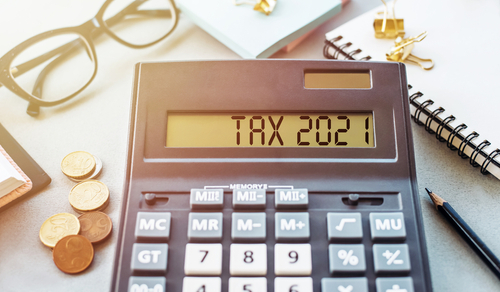News & Articles
Tax-Efficient Strategies for Retirement

Untangling the intricacies of tax relief is one of the most sought-after services here at Vintage Wealth Management and with good reason. Reducing your tax liability is one of the most effective ways to gain the most from your money and there may be plenty of opportunities available for mitigating your tax charges depending on key factors including your salary, age, savings and investments portfolio, and retirement ambitions.
Pension Tax Relief
As with all financial planning techniques, it’s important to come to the tax relief table early in the game to gain the most benefits, and pensions are an essential channel to explore when it comes to tax relief opportunities.
While our colleagues at Vintage Corporate are expert advisers in the field of workplace pensions, our company as a whole pride ourselves on offering a holistic service and using our news channels as a way to help clients gain a full picture of their financial possibilities. That’s why we would like to use today’s post to offer some key insights into tax relief around personal pensions.
Personal Pensions
Tax relief is one of the main advantages of building up a pension so it’s important to maximise this opportunity. The annual allowance means that up to £40,000 investment can be made in any given year into an approved pension arrangement. The government will add basic-rate tax relief (20%) when you contribute into a pension, which qualifies the investor for tax relief at their marginal rate.
If you’re a higher rate taxpayer (40%), you can claim up to a further 20% relief through your tax return; additional rate taxpayers (45%) can claim back up to a further 25% on top of the basic amount, meaning a £40,000 saving into their pension for a net cost of £22,000.
This year, there may also be the opportunity to maximise your contributions into a pension up to £160,000 without having to pay an annual allowance tax charge, providing you have not used any of your previous three years’ allowance.
Otherwise known as the carry forward option, this is available to those who haven’t used their full annual allowance from previous years but personal contributions must not be higher than your earnings in the tax year you make the contribution in order to qualify for relief.
However, if the tapered annual allowance applied for the previous tax years, any individual annual allowance may have been less than £40,000 in those years.
Tapered Annual Allowance
The rules are different for those with a total taxable income of more than £240.000. Since 6 April 2020, individuals who fall under this bracket are subject to a restricted annual allowance for that tax year. For every £2 of income earned over £240,000, the annual allowance is reduced by £1. This reduced rate is rounded down to the nearest whole pound.
The maximum reduction is £36,000, which means that anyone with an income of £312,000 or more has an annual allowance of just £4000. If you have a high income but are caught by the restriction, it may be advisable to reduce your contributions and/or those of your employer, otherwise an annual allowance charge will apply.
However, the tapered reduction doesn’t apply to anyone with ‘threshold income’ of under £200,000, which presents an attractive tax planning opportunity for those earning between £150,000 and £200,000. In addition, if these restrictions mean your annual allowance for the current year is reduced, you could
still make use of the carry forward option.
Lifetime Allowance
It’s also important to understand that the tax relief does count towards your total contribution while the lifetime allowance (LTA) limits the total value of your pension pot. The LTA is the total amount you can hold in your combined pension pot without being subject to tax charges and it’s currently set at £1,073,100 (as of tax year 2020/2021). We recommend speaking with an independent financial adviser if you have a high-value pension pot as you may be able to register for tax protection with HMRC.
Finally, did you know that if you’re a UK resident under the age of 75 then you qualify for tax relief even if you’re not earning? Those who pay 0% tax qualify for up 20% relief – this is a channel that may, for example, be utilised by parents/grandparents who wish to make contributions to their children’s or grandchildren’s pension pots.
For advice and support with all aspects of tax relief and tax planning opportunities, contact our team today.
Risk Disclaimer: This post is not personal advice. Pension and tax rules can change, and any benefits will depend on your circumstances. What you decide to do with your pension is an important decision, and if you’re unsure you should seek professional advice.
RECENT POSTS
-
 Mortgage outlook: Evaluating the impact of falling inflation09/07/2024
Mortgage outlook: Evaluating the impact of falling inflation09/07/2024 -
 Early access: Considerations for taking your pension prior to retirement20/06/2024
Early access: Considerations for taking your pension prior to retirement20/06/2024 -
 From vulnerable to knowledgeable: Managing your wealth from an empowered position30/05/2024
From vulnerable to knowledgeable: Managing your wealth from an empowered position30/05/2024 -
 New tax year: A guide to key changes for 2024/202508/05/2024
New tax year: A guide to key changes for 2024/202508/05/2024 -
 Probate and IHT: Helping families avoid the financial trap11/04/2024
Probate and IHT: Helping families avoid the financial trap11/04/2024
